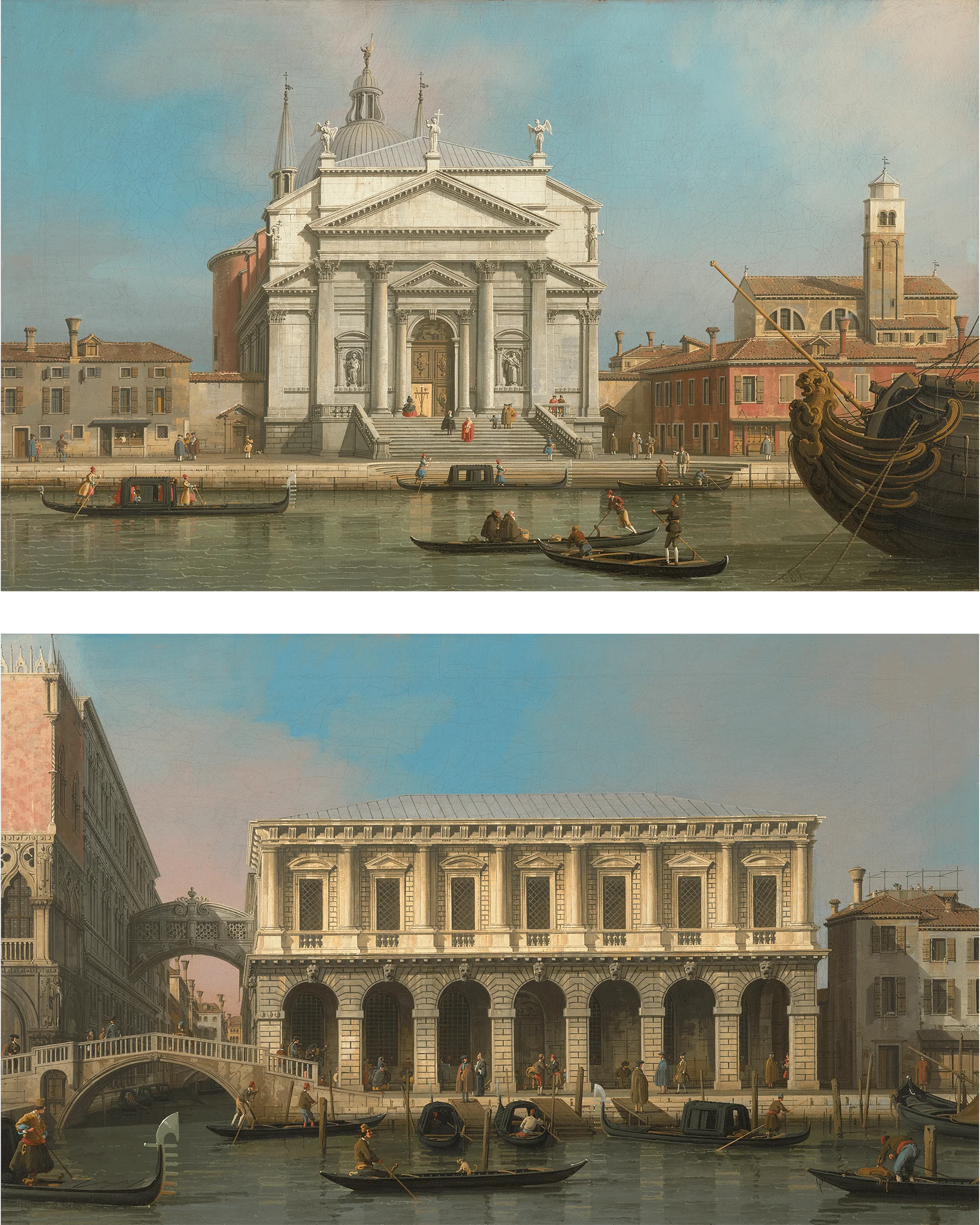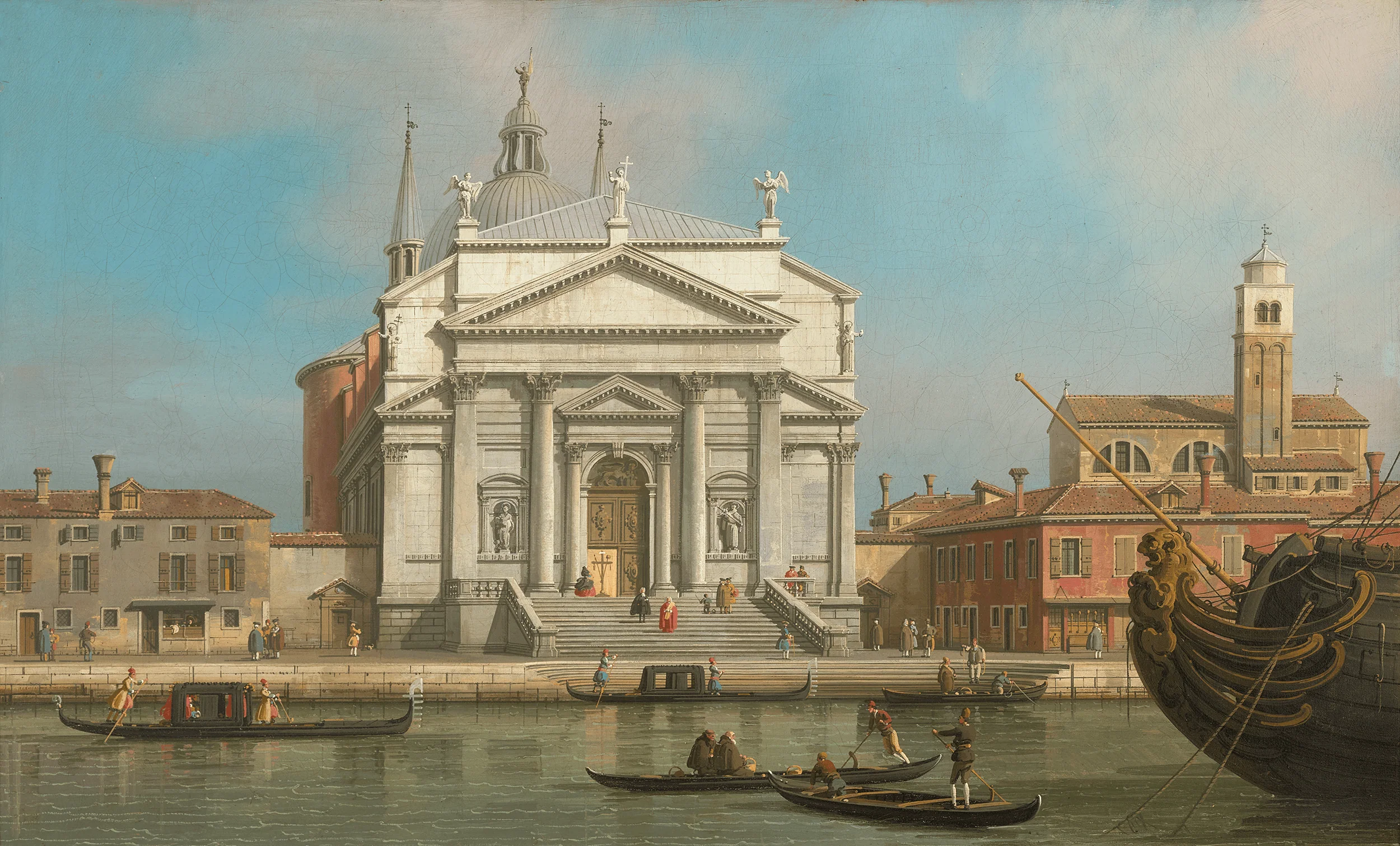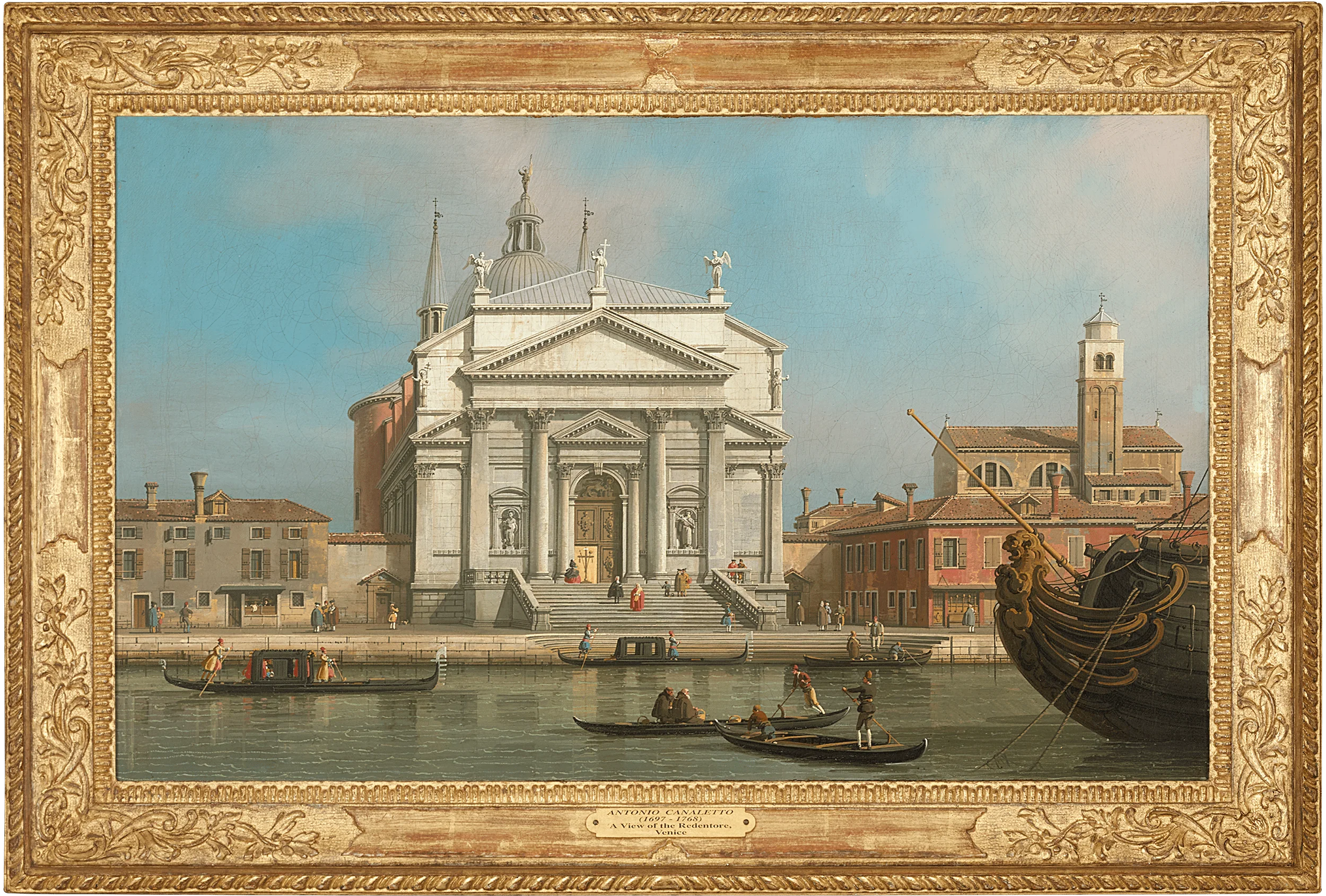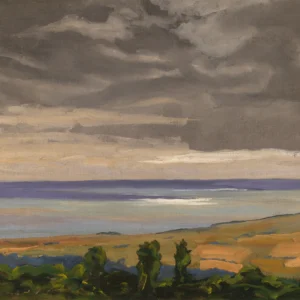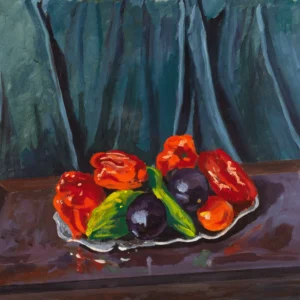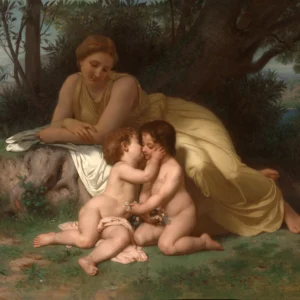Description
- This is the only surviving pair from Canaletto’s ambitious late 1740s series of six vedute paintings
- One painting represents a monumental image of Venice’s Church of Il Redentore
- The second depicts the iconic Prisons of San Marco and the Bridge of Sighs
Giovanni Antonio Canal, called Canaletto
1697-1768 | Italian
The Church of Il Redentore and The Prisons and the Bridge of Sighs
Oil on canvas
Representing the pinnacle of 18th-century Venetian view painting, this exceptional pair of vedute by Canaletto stands among the artist’s most accomplished architectural compositions. Created in the late 1740s as part of a series of six pairs, this is the only surviving intact pair from that ambitious project, making it extraordinarily rare. The Church of Il Redentore and The Prisons with the Bridge of Sighs demonstrate Canaletto’s unparalleled mastery in capturing Venice’s luminous atmosphere while rendering its iconic architecture with documentary precision and technical brilliance.
The first canvas depicts Andrea Palladio’s architectural masterpiece, the Church of Il Redentore, where Canaletto achieves perfect harmony between monumental classical architecture and the animated life of the Grand Canal. The artist’s meticulous attention to perspective creates dramatic depth, leading the eye from the foreground gondoliers through the shimmering water reflections to the church’s majestic facade. The companion work presents a stunning view of the famous Prisons of San Marco with the Bridge of Sighs, one of only two depictions of the iconic prison Canaletto ever created. Here, warm golden light bathes the rusticated stonework while theatrical shadows play across the water’s surface, creating a vision that transcends mere architectural rendering.
Canaletto transformed Venetian view painting into an art form of unprecedented sophistication, establishing himself as the supreme interpreter of La Serenissima’s architectural splendor. His technical innovations, including the use of camera obscura for precise perspective and his development of atmospheric effects through layered glazes, influenced generations of landscape painters throughout Europe. The artist’s ability to combine precise accuracy with poetic interpretation made his works essential acquisitions for Grand Tour travelers, while his mastery of light and reflection established the visual vocabulary for depicting Venice that persists today.
Preparatory drawings for the Redentore composition survive in the British Royal Collection and Harvard Art Museums. His works remain predominantly in major museum collections including the Metropolitan Museum of Art, National Gallery in London and the Frick Collection, making privately held examples exceptionally significant and rare.
Circa 1746
Each canvas: 18″ high x 29 3/5″ wide (45.72 x 75.18 cm)
Each frame: 24 1/5″ high x 36″ wide x 2″ deep (61.47 x 91.44 x 5.08 cm)
View the Dossier
Provenance:
Probably acquired directly from the artist by Sir Richard Neave, 1st Bt (1731–1814), Dagnam Park, Essex, in London, late 1740s
Thence by descent in the Neave family, until sold before 1891 (presumably the paintings entered for sale by Sheffield H.M. Neave of 39 Bryanston Square, London, at Christie’s, 27 June 1885, lots 25 and 26, the first painting described as The Doge’s Palace, but both withdrawn before the sale)
G.A.F. Cavendish Bentinck (1821–1891), M.P., P.C., 3 Grafton Street, London, and Brownsea Island
Posthumous sale of the above, London, Christie’s, 11 July 1891, lots 625 and 626 (as The Church of Santa Maria della Salute and The Bridge of Sighs), sold together for 115 guineas, to Lesser
Lesser, Bond Street, London
Willson Bros., Pall Mall, London, acquired from the above
Mr., later Sir, George Leon, Bt (1875–1947), 48 Brompton Square, London, acquired from the above
Savile Gallery, London, 1928
Mark Oliver, acquired from the above
Arthur Tooth & Sons, 31 Bruton Street, London
Private collection, by 1952
Anonymous sale, London, Christie’s, 9 December 1988, lot 40
Walpole Gallery, London, 1989
Private Collection, United States
Lampronti Gallery
Private Collection, acquired from the above in 2007
Private Collection
M.S. Rau, New Orleans
Literature:
K.T. Parker, The Drawings of Antonio Canaletto in the Collection of His Majesty the King at Windsor Castle, London 1948, p. 35, under no. 34 (The Redentore)
W.G. Constable, Canaletto: Giovanni Antonio Canal, 1697–1768, Oxford 1962 (and subsequent editions revised by J.G. Links), vol. I, reproduced pl. 26, no. 84 (The Prison), vol. II, p. 216-17 & 324, nos. 84 & 318, and p. 346-7 & 590, under nos. 317 and 775
L. Puppi, The Complete Paintings of Canaletto, Milan 1968, nos. 257 (The Prisons) reproduced and 258 (The Redentore)
J.G. Links, Canaletto, The Complete Paintings, London 1981, p. 80, nos. 275 (The Prisons) reproduced and 276 (The Redentore)
A. Corboz, Canaletto. Una Venezia immaginaria, Milan 1985, vol. II, p. 662, nos. P 357-358, both reproduced
C. Crawley in K.T. Parker, The Drawings of Antonio Canaletto in the Collection of Her Majesty the Queen at Windsor Castle, with an Appendix to the Catalogue by Charlotte Crawley, Bologna 1990, p. 169, under no. 34 (The Redentore)
J.G. Links, A Supplement to W.G. Constable’s Canaletto: Giovanni Antonio Canal 1697–1768, London 1998, p. 9 & 31–32, reproduced (The Redentore), pl. 269
C. Beddington, Canaletto in England. A Venetian Artist Abroad, 1746–1755, exhibition catalogue, New Haven, 2006, p. 169, both reproduced
Canaletto à Venise, exhibition catalogue, Paris 2012, p. 138, no. 39
Exhibited:
London, Savile Gallery, Canaletto, January 1930, no. 9 (The Redentore)
London, Arthur Tooth and Son, November–December 1952, nos 2 and 4
London, Walpole Gallery, Italian Landscapes and Vedute, 14 June – 28 July 1989, nos 26 and 27 (both illustrated)


